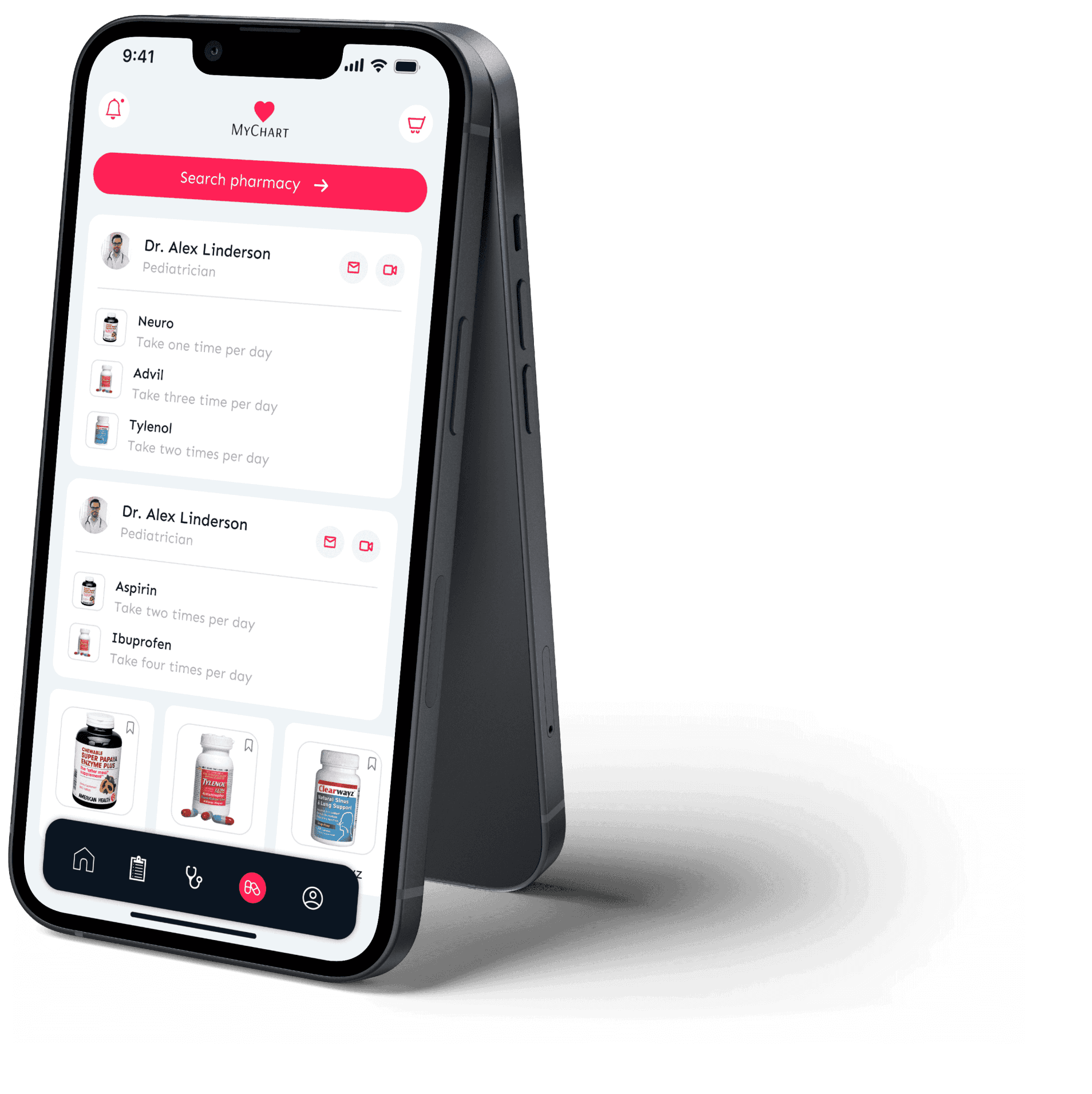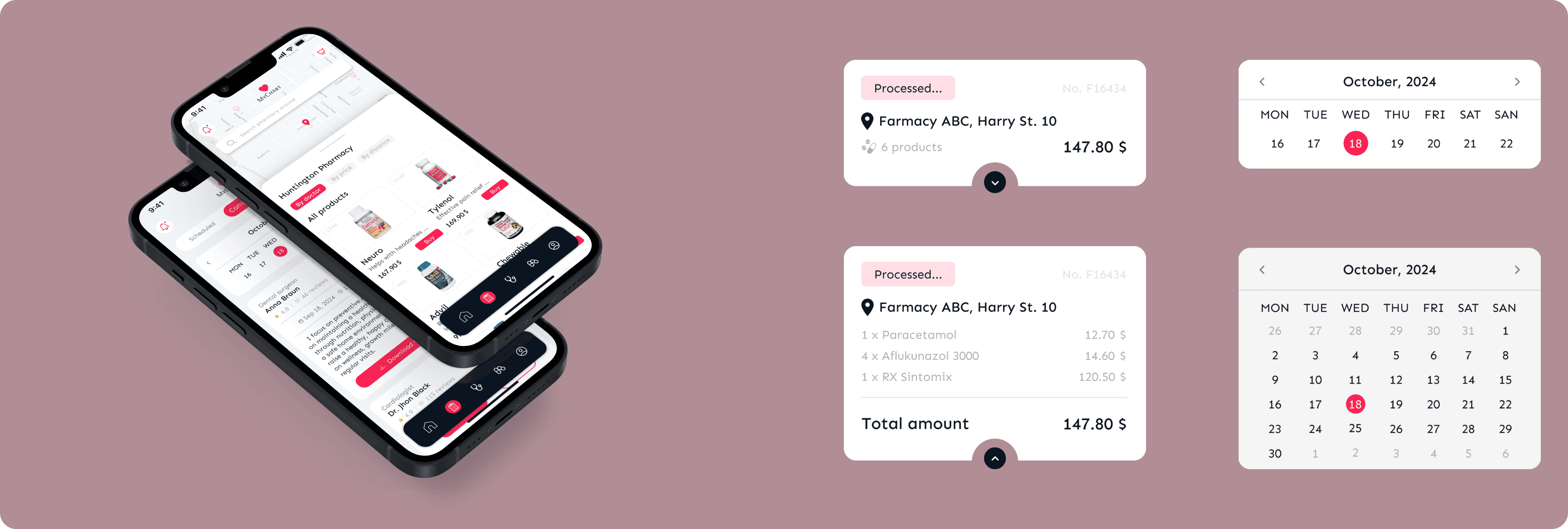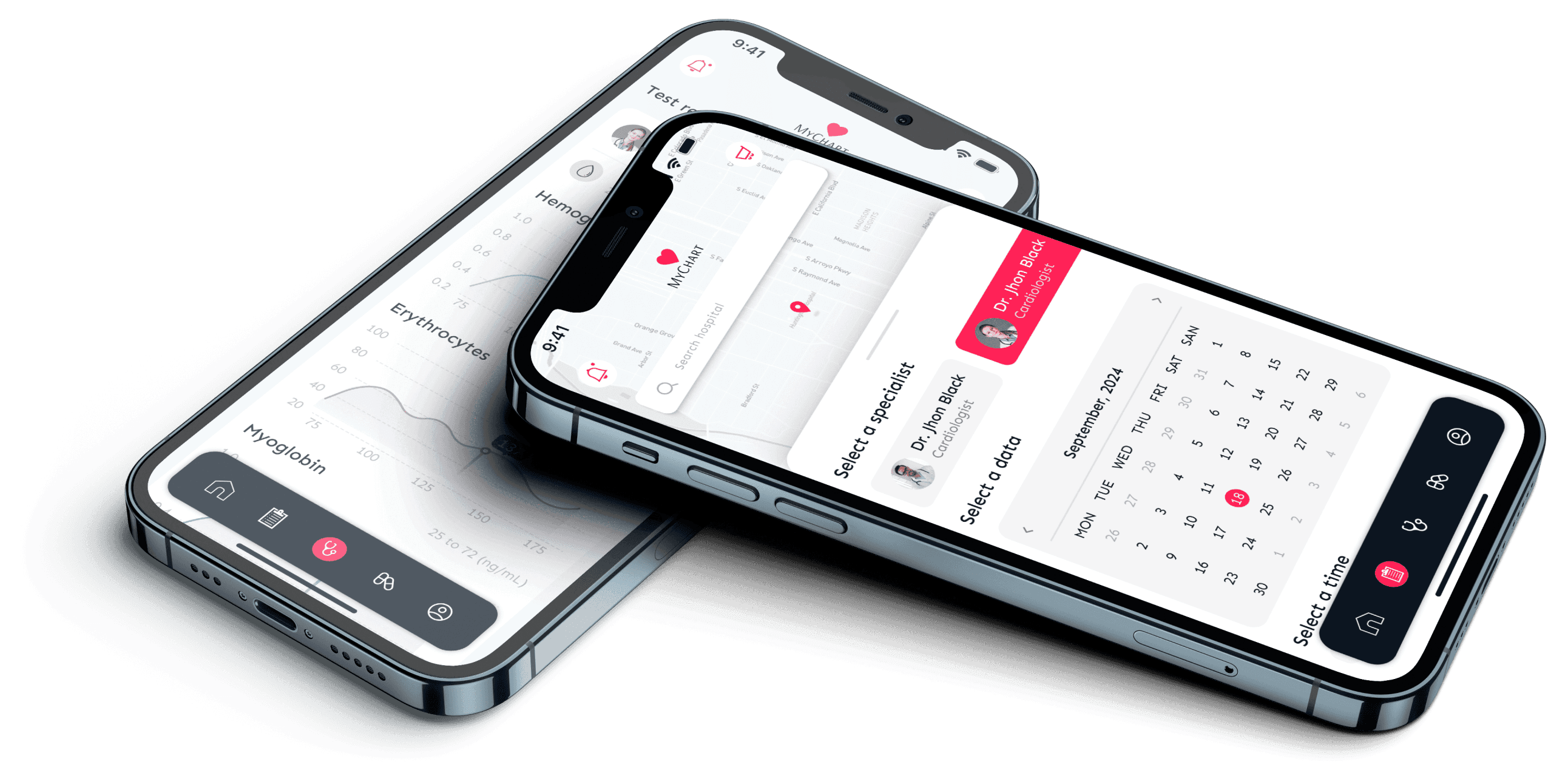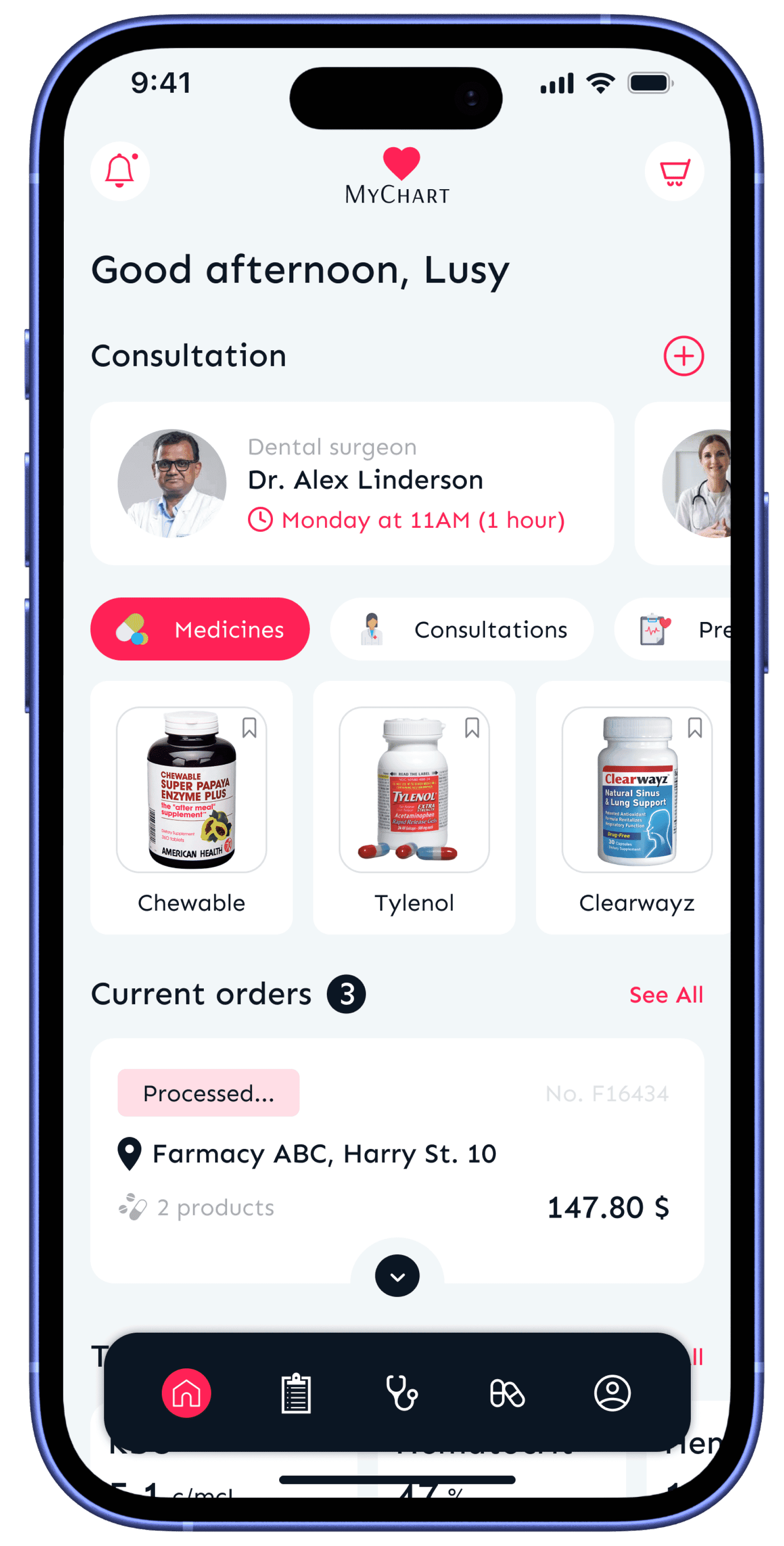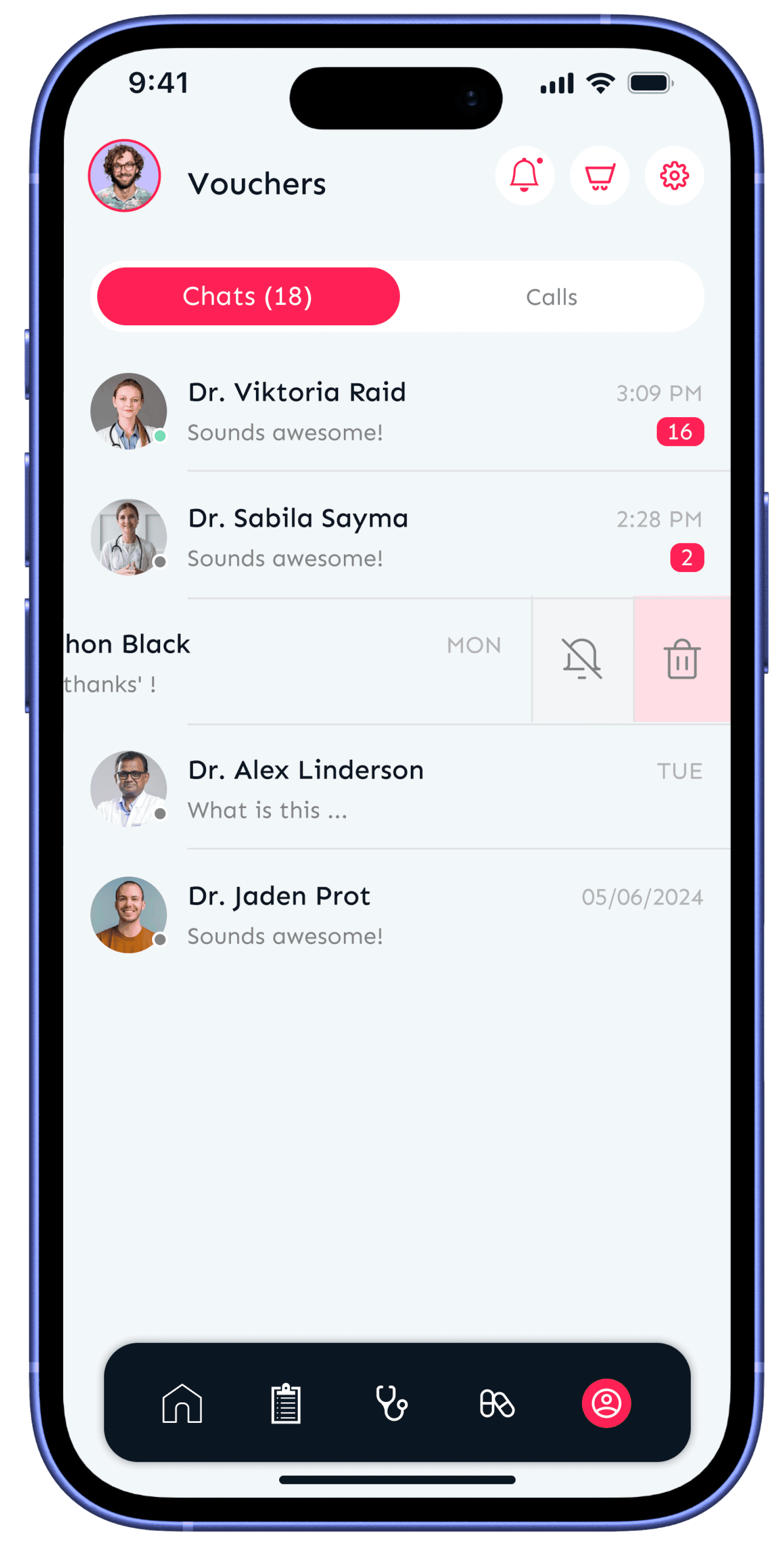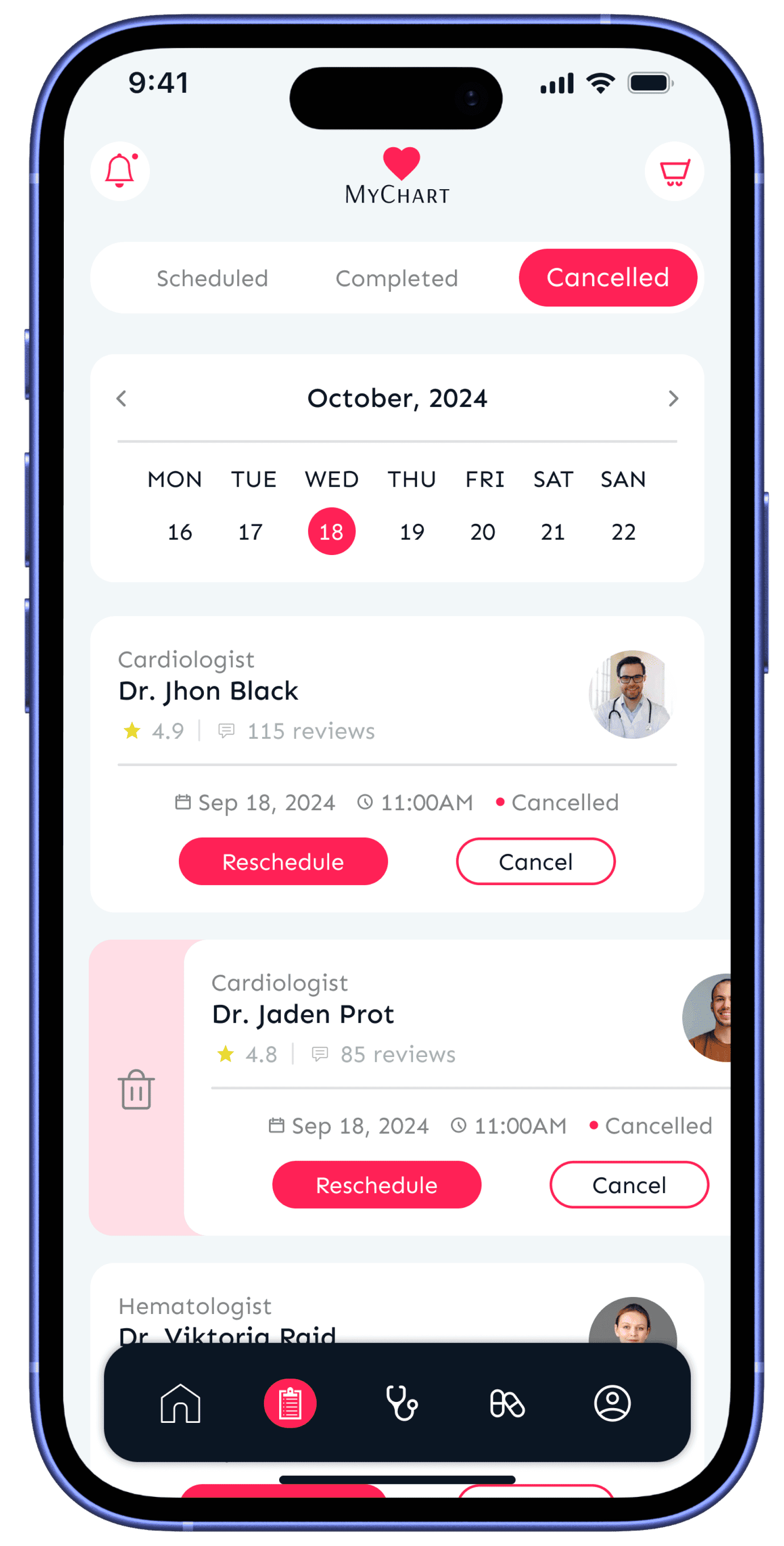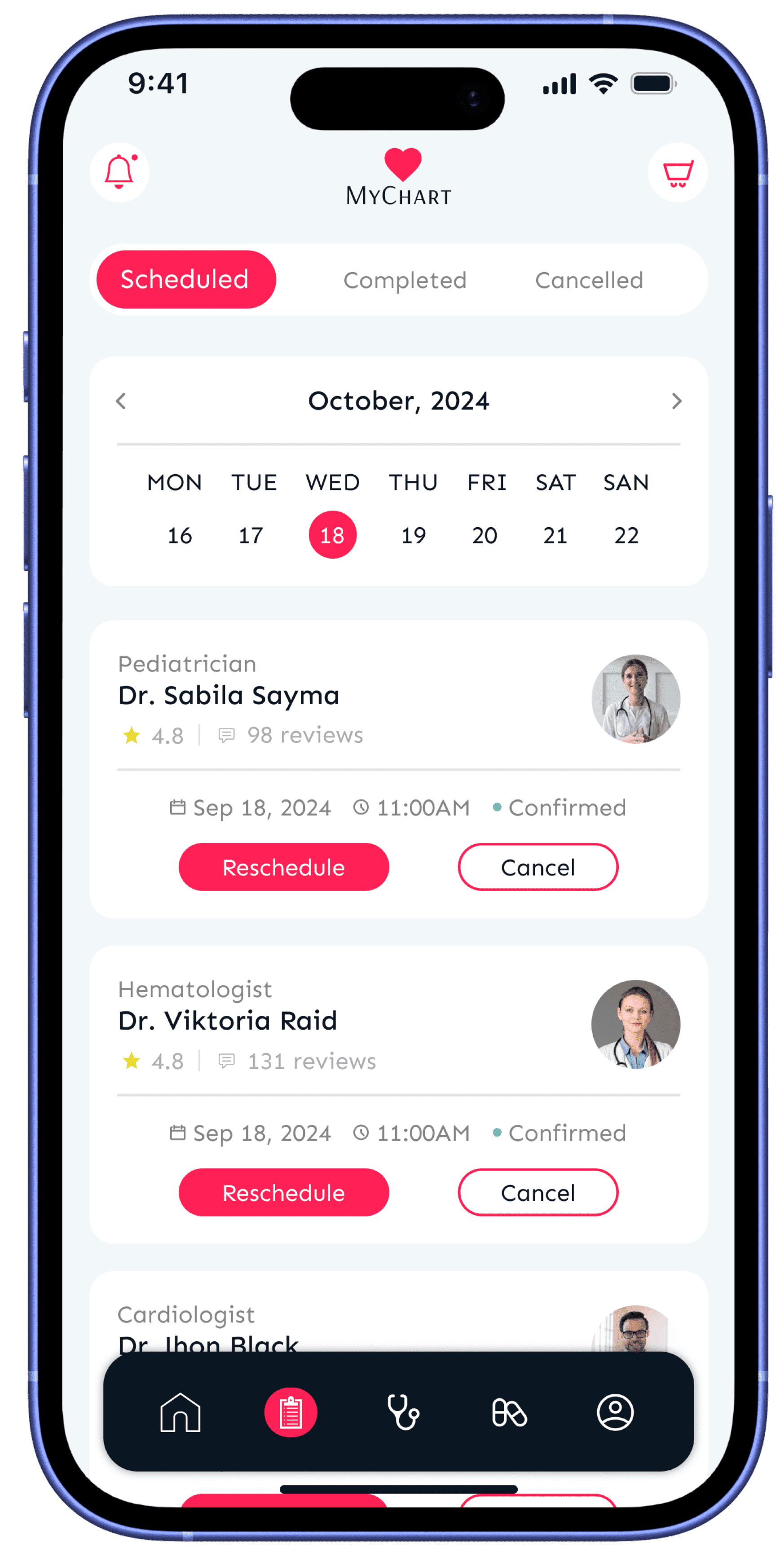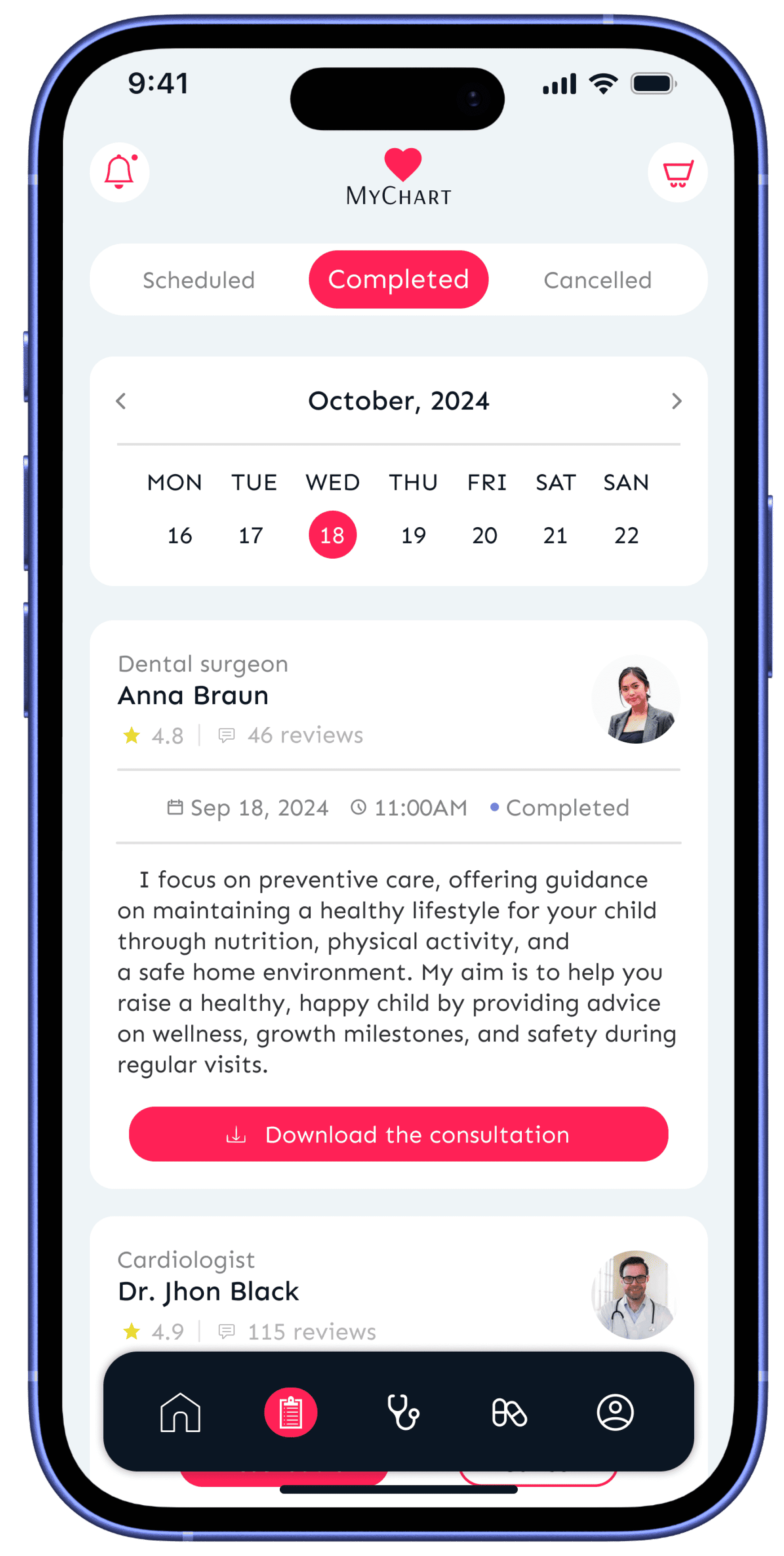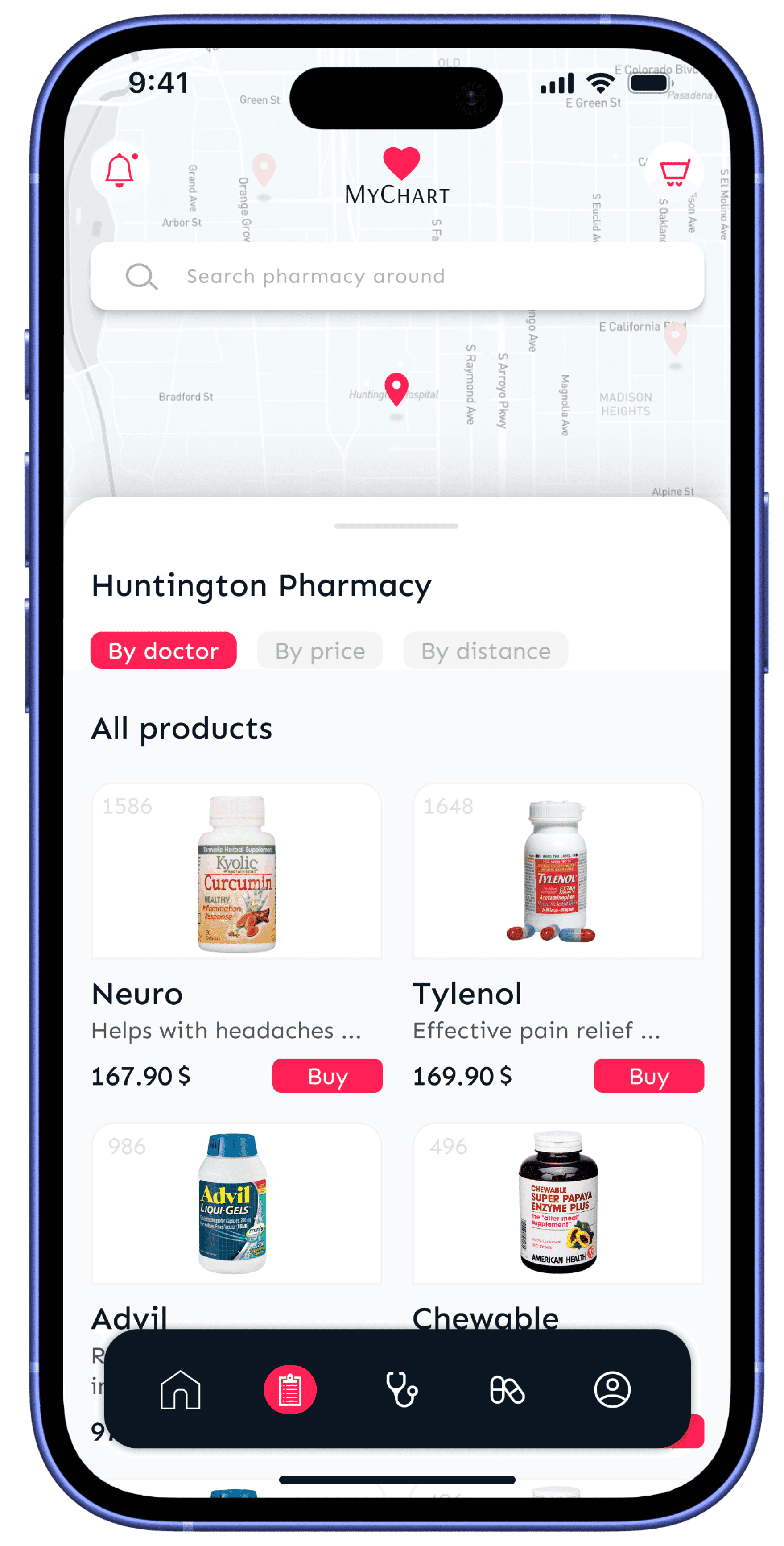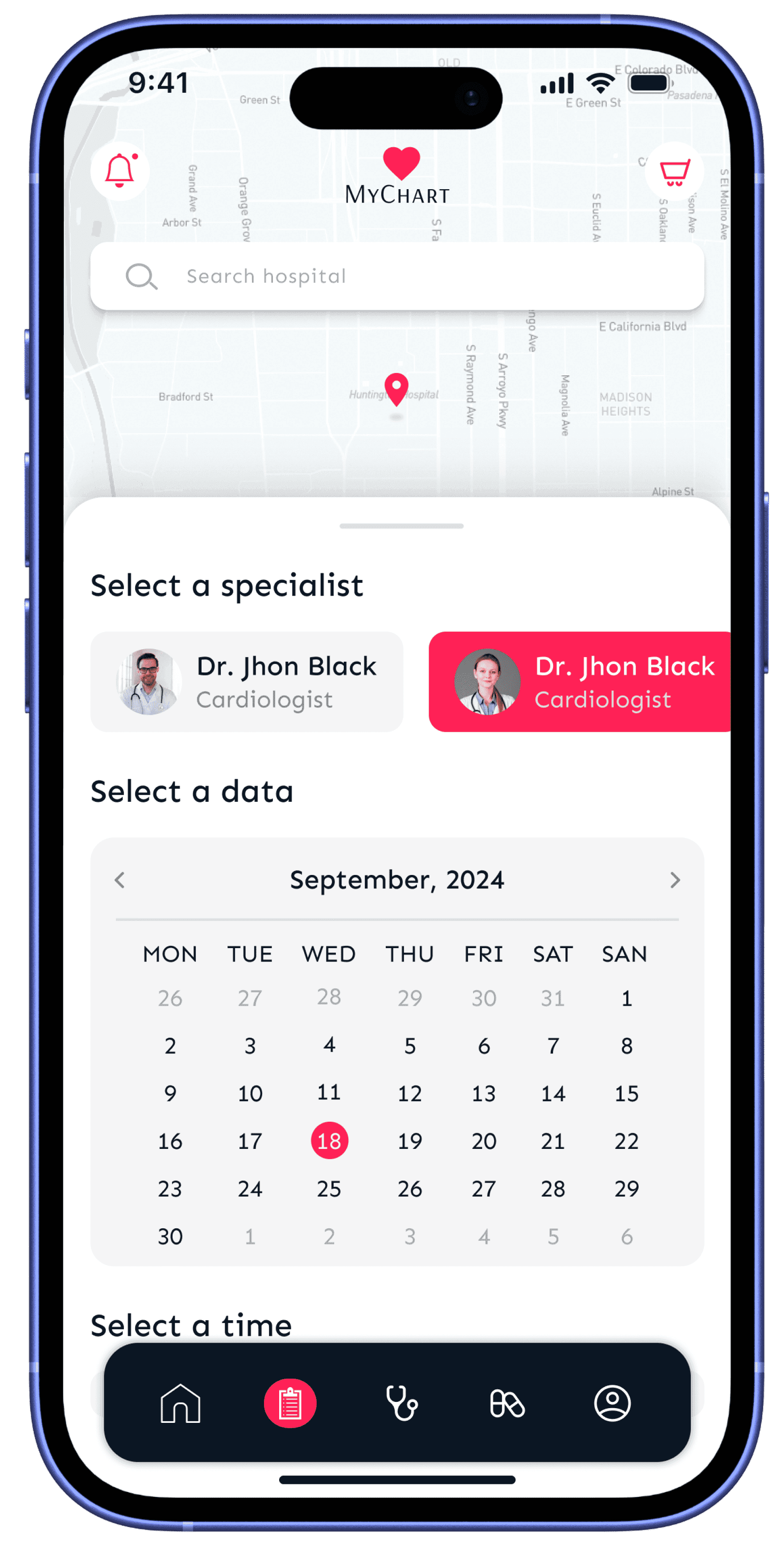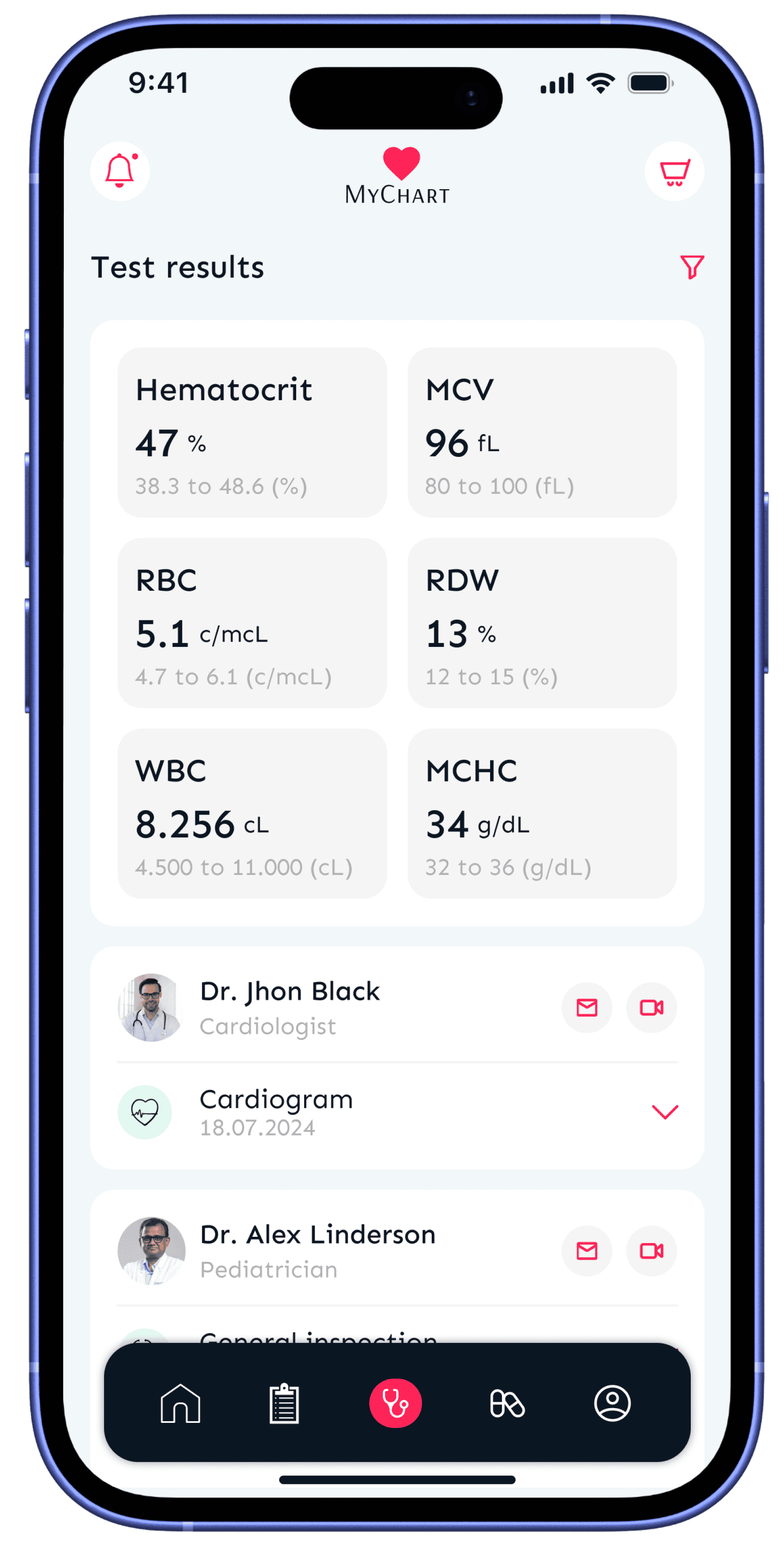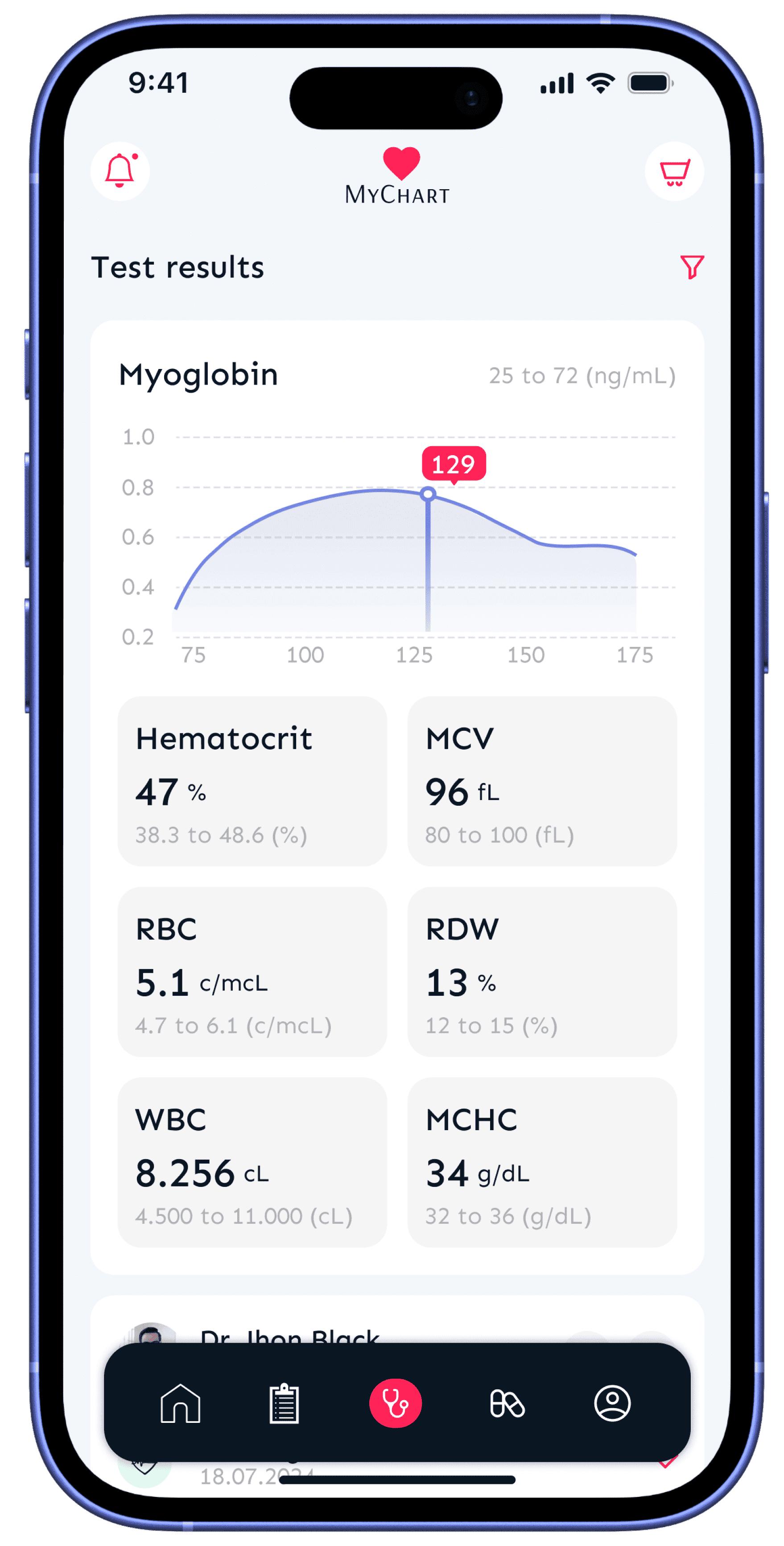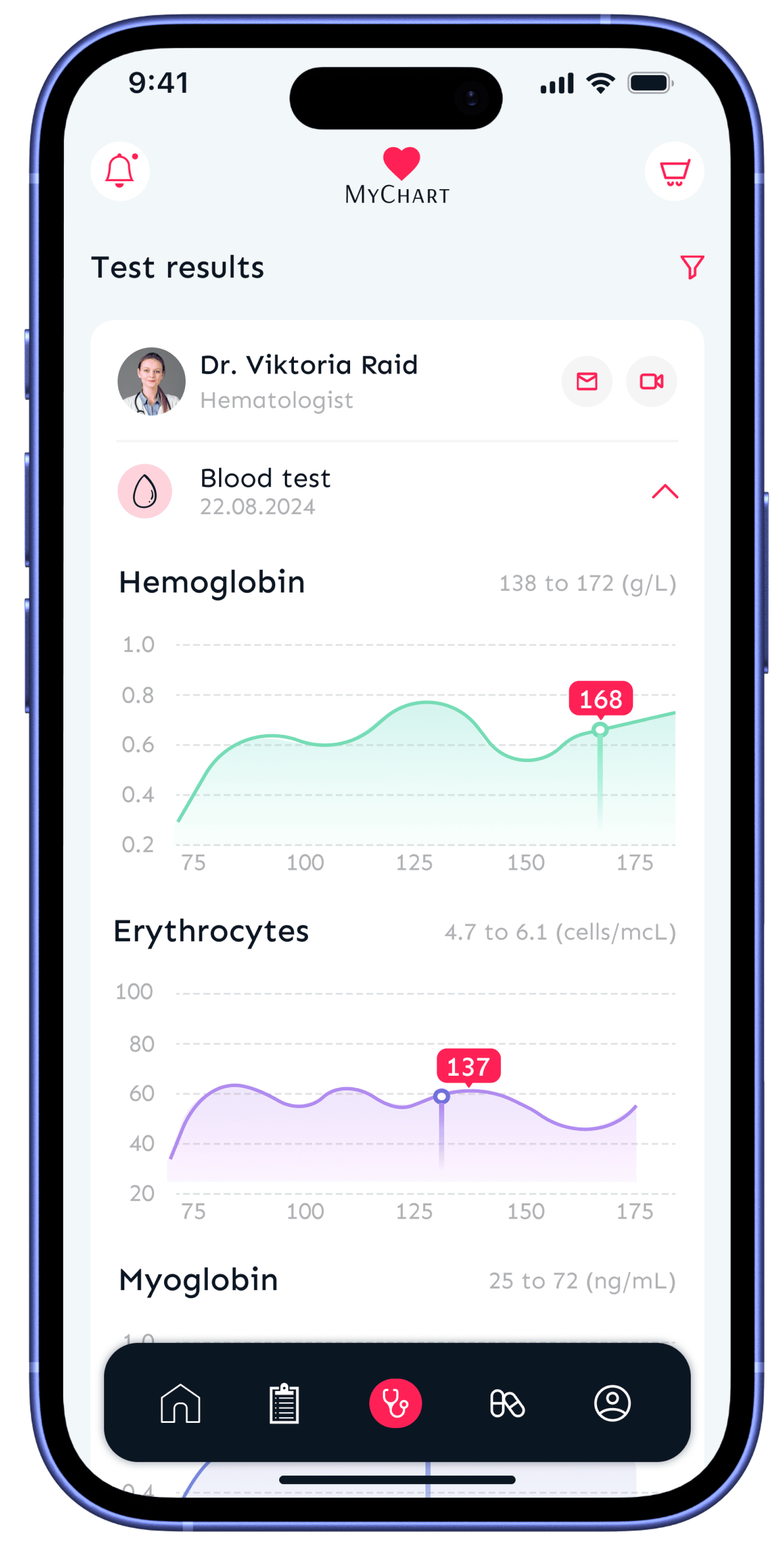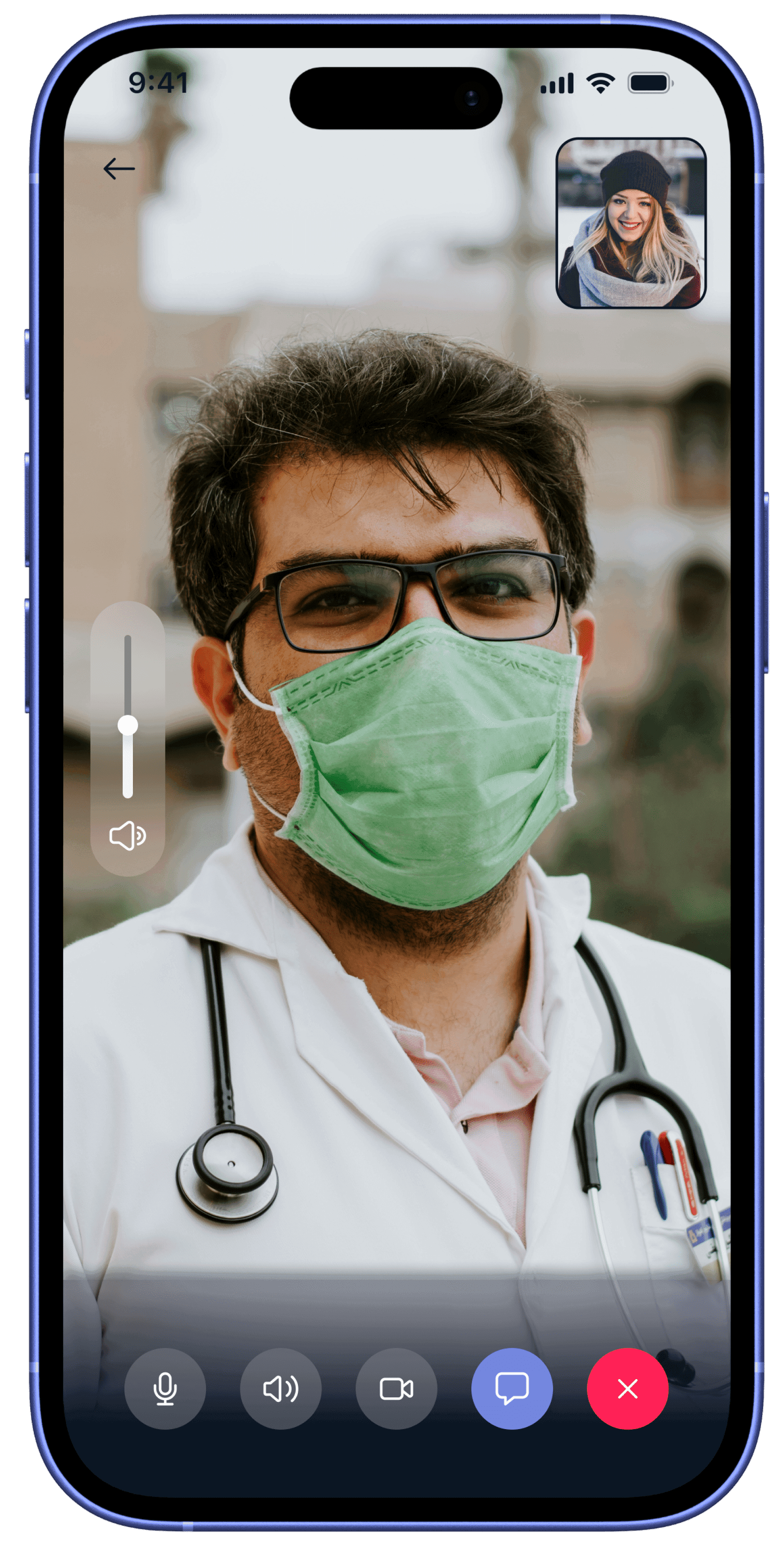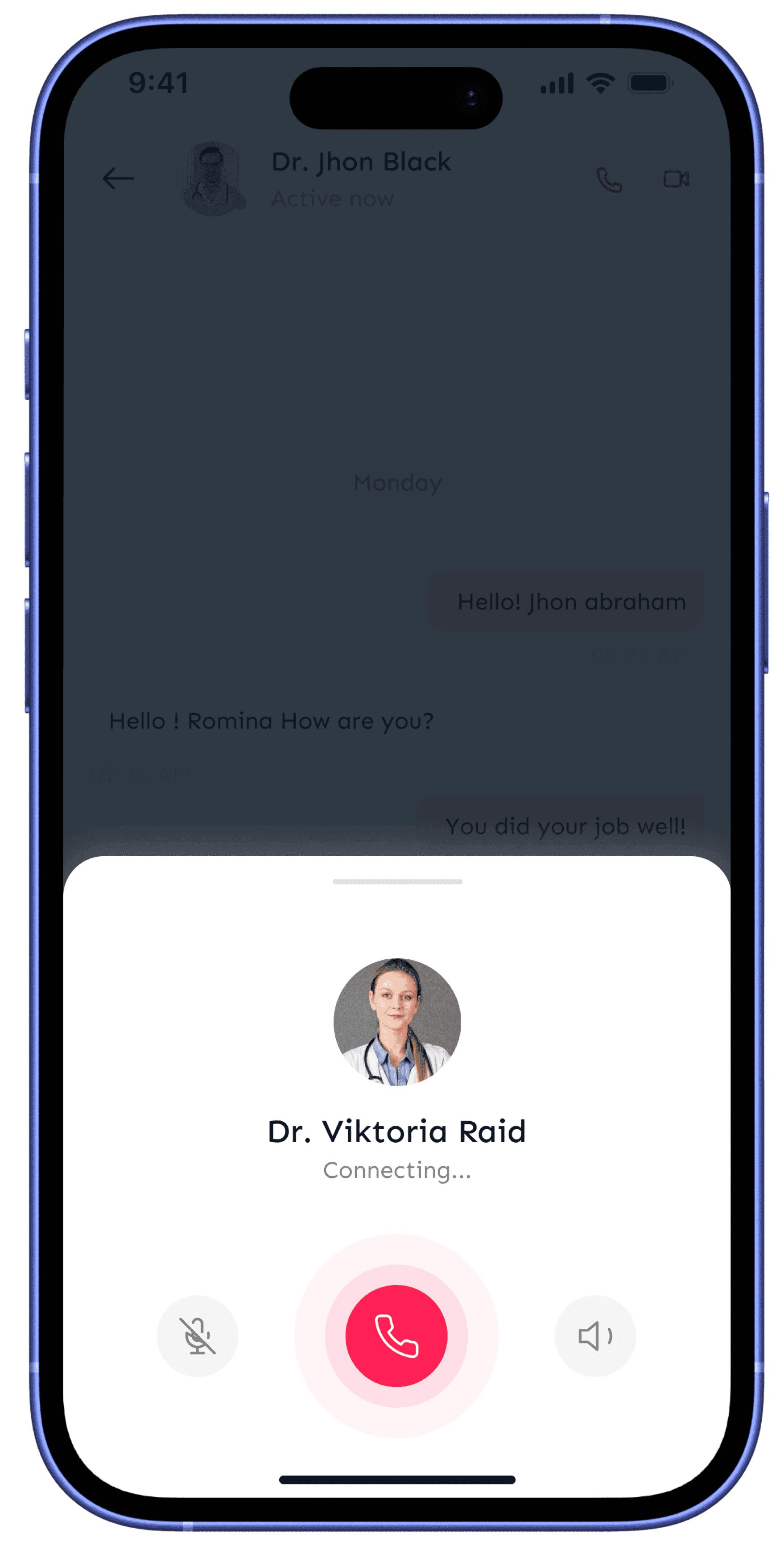My Role
Problem Statement
My analysis of the MyChart application and user feedback revealed several critical issues preventing patients from effectively managing their healthcare:
• Confusing navigation made it difficult to find key features like appointment booking, test results, and prescriptions.
• No quick access to important updates—users had to search through multiple screens to find upcoming appointments or medication reminders.
• Unstructured presentation of prescriptions and lab results, leaving patients unclear about their health status and treatment plans.
Major opportunity
Simplify healthcare management and create an intuitive, empathetic digital experience
Simplified Appointments
As part of the MyChart redesign, I simplified the navigation and introduced convenient calendar widgets to help users track their upcoming appointments. I also implemented a structured medication list with doctors' prescriptions, making it easy for patients to manage their treatment and access important information in just one click.
Design Solutions
1. Intuitive and Streamlined Navigation
I developed a clear and simple navigation structure, ensuring that the most critical features are accessible within one or two taps.
The redesigned home screen provides
a consolidated view of upcoming appointments, medication reminders,
and recent test results.
The Design
Unified Interaction Design
On the homepage, you can quickly view your test results, recent appointments, and current medications. You’ll also find your doctor’s prescriptions and recommendations from past visits, making it easy to stay informed. Plus, you can instantly message your doctor if you have any questions.
Delete and Archive Messages
Make a swipe and you can delete your message history with the doctor or archive it.
Completed Visits
You can also view completed visits to the specialists. You can see the recommendations of the doctor in the admission card. Select the date you have an appointment with the doctor and you will see all scheduled appointments for that day.
Tablets
In the Medications section, you can see the doctor's prescriptions.
Appointment Type
Now you can easily make an appointment with a doctor. Just choose the right specialist, date and time of the appointment.
Test Results
An important section of the application, where you can find out in detail information about your state of health and about each analysis separately.
Phone and Video calls
All recordings of your conversations are recorded and you can listen to them later
The Results
40%
Reduction in user task time through simplified navigation and intuitive user flows.
60%
Faster communication with healthcare providers via optimized chat and call features.
35%
Increase in user engagement, particularly among users aged 50 and above.
50%
Decrease in appointment booking errors with clearer scheduling and confirmation screens.
